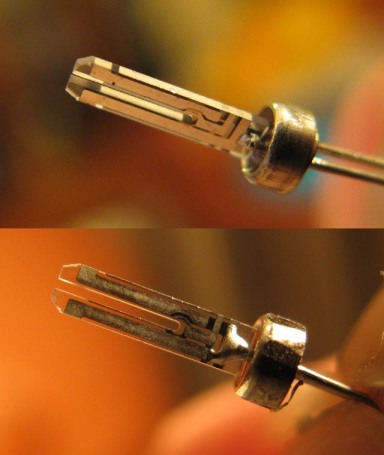Take a look at your wrist. Have you ever wonder what makes your watch tick with such precision? What if I told you the same technology that causes your watch to work is also key to one of the most sensitive balances on the planet? Sounds crazy right?!
Well, I promise it’s not crazy! The answer to both lies in the properties of quartz. Quartz is a mineral that you can find in granite and sandstone, and you may even have some jewelry containing this gemstone. What makes quartz so beneficial is the fact that it produces an electrical current when it is squeezed. The reverse is also true, meaning that if we apply a voltage to quartz it will deform or move back and forth in response to this (electrical) stress. Quartz and other materials that exhibit this property are known as piezoelectric materials. (Languate note: the roots of the word piezoelectric come from the Greek word piezin meaning to press or squeeze)

So how does this help us tell time? Well, the battery in your watch applies a voltage to the quartz component (typically either a small bar or a tuning fork), which sets the quartz into motion. The quartz will move back and forth at a very precise rate.

The motion of the quartz is then amplified and other circuitry in the watch measures the current fluctuations that result from the movement of the quartz. A motor then converts these fluctuations in electrical current through a series of gears into motion of the hands of the watch. The hands then move around a dial at extremely precise and accurate intervals–the second hand will move one 60th of the way around the dial every second. This allows us to keep track of time!

The precision and accuracy of a well-defined piece of quartz along with its piezoelectric properties can really benefit us in other ways as well. For example, one of our goals at the Center for Sustainable Nanotechnology is to understand the interactions between nanoparticles and lipid bilayers. A lipid bilayer is the main component of a cellular membrane, which functions as a separation barrier between a cell and its environment. This may seem completely unrelated to the watch on your wrist right now, but in order to study these interactions, we utilize the properties of quartz to detect small amounts of nanoparticles as they interact with the lipid bilayer.

Basically we are able to form a lipid bilayer right on top of a quartz crystal and can then pass nanoparticles over it to study their interactions. So how can we actually monitor these interactions?? We use an instrument called a quartz crystal microbalance. This is one of the most sensitive scales on the planet, able to measure tiny bits of matter 10 billion (with a B!) times smaller than a grain of rice!

This instrument, much like the watch described above, makes use of a quartz crystal. We can apply a voltage to the crystal, which will cause it to move back and forth at some very precise frequency. If something (like a nanoparticle) attaches to the crystal, the frequency will decrease. Think about it like this – imagine swinging two toddlers of different weights back and forth by their arms. You’ll notice that you end up swinging the heavier toddler more slowly. It is the same way with the quartz crystal. Its motions (and frequency) will slow down as mass attaches to it. The specific frequency at which the quartz crystal vibrates (or the toddler swings) is known as its resonant frequency, and the crystal’s resonant frequency is highly sensitive to anything depositing on top of the crystal. It is these changes in frequency that allow us to determine when we have formed a lipid bilayer on the quartz crystal surface.
After we have formed a bilayer, we can then introduce nanoparticles to see if there are other changes in the frequency. A decrease in frequency would suggest that the nanoparticles are attaching to the lipid bilayer. We’re very interested in these kinds of interactions because if nanoparticles attach to lipid bilayers, they might end up attaching to or even going through cellular membranes and on into cells. This could potentially be bad news for humans and other forms of life that are exposed to nanoparticles. We hope by understanding more about these interactions we can help other scientists make nanotechnology that is benign by design.
From telling time to detecting small mass changes – the abilities of quartz are awesome!

[…] Madison from the Pedersen and Hamers groups. They use quartz crystal microbalance with dissipation (QCM-D) to measure the mass of nanoparticles attached to a bilayer, and x-ray photoelectron spectroscopy […]
[…] of a given nanomaterial are attached to particular interface? Use a quartz crystal microbalance (blog entry). Want to know the charges of a nanomaterial attached to an interface? Use nonlinear laser […]
[…] What I am currently working on is using the quartz crystal microbalance, which I described in my last blog post, to see how nanoparticles interact with lipid bilayers (a mimic for the outer membrane of […]